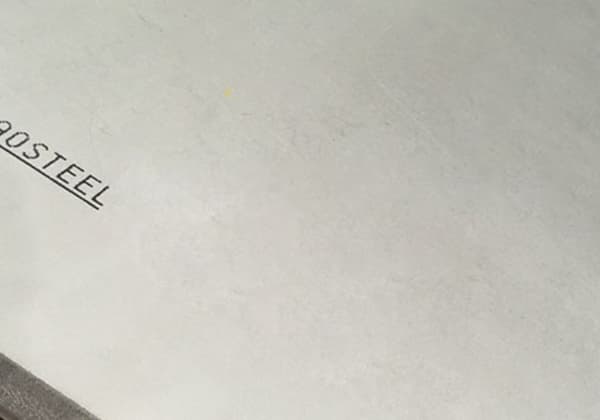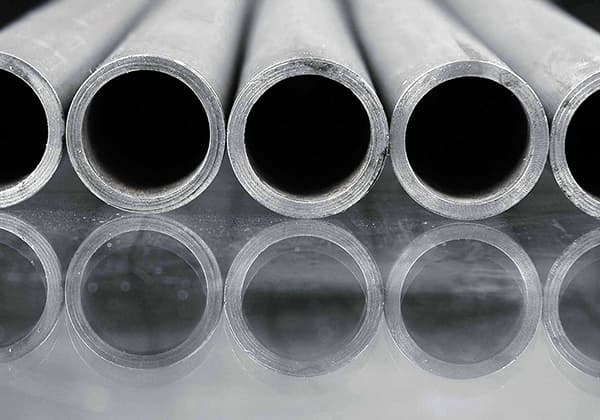
How can you ensure the quality and durability of stainless steel plates in your projects? This article delves into the essential standards for inspecting stainless steel plates, covering various surface processing techniques, standard surface finishing types, and the significance of surface roughness measurements. Learn how to select the right finishes to enhance aesthetics and functionality while adhering to industry standards.

Stainless steel exhibits a natural robust and bright appeal, its color softly reflecting the hues of its surrounding environment.

Approximately five types of surface processing can be applied to stainless steel. They can be combined to produce a wider range of final products.
These types include: rolling surface processing, mechanical surface processing, chemical surface processing, mesh texture surface processing, and colored surface processing.
There are also some specialized surface treatments.
Regardless of the type chosen, the following steps should be adhered to:
a. Confer with the manufacturer to determine the required surface processing, ideally preparing a sample as a standard for mass production.
b. When used in large areas (such as composite plates), ensure that the substrate coil plate or coil used is from the same batch.
c. In many architectural applications, such as elevator interiors, fingerprints, although removable, are unsightly. If a fabric texture surface is used, it becomes less noticeable. Mirror-finished stainless steel should never be used in these sensitive areas.
d. When choosing surface processing, consider the manufacturing process. For instance, to remove welding beads, it may be necessary to grind the weld, and restore the original surface processing. Patterned plates are challenging or even impossible to meet this requirement.
e. Some surface treatments, grinding or polishing have directional patterns, known as unidirectional. If this pattern is applied vertically instead of horizontally, it is less likely to accumulate dirt and is easier to clean.
f. Regardless of the precision processing used, additional process steps are necessary, thereby increasing costs. Therefore, the choice of surface processing should be made carefully. Architects, designers, and manufacturers need to understand stainless steel’s surface processing. Through friendly cooperation and mutual exchange, the desired outcome is guaranteed.
g. Based on our experience, we do not recommend using alumina as an abrasive, unless handled very carefully during use. Silicon carbide abrasive is preferable.
Various surface finishing techniques are often represented by numbers or other classification methods, all of which are included in relevant standards, such as the “British Standard BS1449” and the “Standard of the American Iron and Steel Institute’s Committee of Stainless Steel Producers”.
There are three basic types of rolled surface finishes for sheet and strip materials, represented by their production processes.
No.1: It involves hot rolling, annealing, pickling, and descaling. The resulting steel surface is a dull finish and somewhat rough.
No.2D: Superior to No.1 finish, it also has a dull surface. It involves cold rolling, annealing, descaling, and a final light rolling with a dull roller.
No.2B: This is the most commonly used in construction applications. It shares all the processes with 2D, except for a final light cold rolling with a polished roller after annealing and descaling. The surface is slightly glossy and can be polished.
No.2B Bright Annealed: This results in a reflective surface, rolled with a polished roller and finally annealed in a controlled atmosphere. Bright annealing retains its reflective surface without forming an oxide layer. As there’s no oxidation during the bright annealing process, further pickling and passivation are not required.
No.3: Represented by 3A and 3B.
3A: The surface is uniformly ground with a grit size of 80-100.
3B: Dull polished, resulting in a uniform straight striation. Usually achieved by a single grind with a grit size of 180-200 on a 2A or 2B plate.
No.4: Unidirectional surface finish with low reflectivity, widely used in construction applications. The process involves initial polishing with coarse grit, followed by grinding with a grit size of 180.
No.6: This is an improvement over No.4, involving polishing the No.4 surface with a tamper brush in a grit and oil medium. This finish isn’t included in the “British Standard 1449” but can be found in American standards.
No.7: Known as bright polishing, it is applied to finely ground surfaces that still bear grind marks. Typically, a 2A or 2B plate is polished using a fiber or cloth polishing wheel and corresponding polishing paste.
No.8: This is a mirror-polished surface with high reflectivity, often referred to as a mirror finish because it reflects images clearly. Stainless steel is continuously polished with fine grit, followed by a very fine polishing paste.
In construction applications, it should be noted that this surface can leave fingerprints in high-traffic areas or places frequently touched by people. Fingerprints can, of course, be wiped off, but they may sometimes affect aesthetics.
The surface finishes described in the “official” standards and literature are general introductions.
Samples are the most direct way to represent the types of surface finishes.
Polishing or precision metalworking manufacturers will provide samples of various surface finishes, and users should discuss with them.
The categorization of rolled surface finishing and polished surface processing indicates the achievable level, another effective representation is by measuring surface roughness.
The standard measurement method is called CLA (Center Line Average), where the gauge moves transversely across the steel plate’s surface, recording the amplitude of peak-valley changes.
The smaller the CLA number, the smoother the surface. The final outcomes of different levels can be deduced from the surface finishing and CLA numbers in the table below.
| Surface Finishing CLA | Micron |
| 2B | 0.1-0.5 |
| 2A | 0.05-0.1 |
| 2D | 0.4-1.0 |
| 3 | 0.4-1.5 |
| 4 | 0.2-1.5 |
| 8 | 0.2-1.5 |
| EP | Half of the basic value |
EP=Electrolytic Polishing, which can roughly reduce the peak-valley change amplitude to half of the original surface.
Points to note:
We should remember that grinding operations using sandpaper or sandbelt essentially belong to polishing cutting operations, leaving very fine lines on the steel plate surface.
We have encountered problems when using alumina as an abrasive, partly because of pressure issues.
Any grinding parts of the equipment, such as sandbelts and grinding wheels, must not be used on other non-stainless steel materials before use, as this would contaminate the stainless steel surface.
To ensure the consistency of surface processing, new grinding wheels or sandbelts should first be tested on similar scrap materials for a comparative purpose.

This is a metal removal process in which stainless steel, as the anode in the electrolyte, removes the metal from the surface layer when electrified. This process is commonly used in part processing, as their shapes are difficult to polish using traditional methods.
It is often used on the surface of cold-rolled steel plates because their surface is smoother than hot-rolled steel plates.
However, electrolytic polishing makes surface impurities more noticeable, especially titanium and niobium-stabilized materials, where granular impurities cause discrepancies in the weld zone.
Small weld scars and sharp edges can be removed by this process. This technique focuses on dealing with protrusions on the surface, prioritizing their dissolution.
Electrolytic polishing is achieved by immersing stainless steel in a heated liquid, with the liquid ratio involving many proprietary technologies and patented techniques. The electrolytic polishing effect on austenitic stainless steel is excellent.
Stainless steel can be worked with a variety of patterns. The benefits of adding patterns or textured surface processing to steel sheets include:
1. Reduction of “oil canning,” a term describing the visible unevenness of bright materials, such as large decorative panels, which remain hard to completely flatten even after stretch leveling or tension leveling, leading to oil canning.
2. A patterned texture can reduce glare when exposed to sunlight.
3. Minor scratches and small dents are less noticeable on patterned panels.
4. The strength of the steel sheet is increased.
5. Provides more choices for architects.
Patented patterns include linen (used on London’s Euston Tower), embossed, pearlescent, and leather patterns.
Ripple and linear patterns can also be used. Textured surfaces are especially suitable for interior decoration like elevator paneling, counters, wall panels, and entrances.
For external applications, it’s important to ensure stainless steel can be cleaned by rainwater or manual washing to avoid corners where dirt and airborne impurities can accumulate, preventing corrosion and maintaining the aesthetic appeal.
Satin surface processing is one of the most common surface treatments, and it involves polishing the surface of a steel sheet that has undergone polishing or bright annealing with a nylon grinding belt or brush.
For internal applications like elevator interiors, mixed surface treatments are popular.
This mixed technique involves creating a matte surface by blasting with glass beads, followed by mask treatment, then applying a plastic film to create a polished surface treatment, resulting in a mixed matte and polished surface. Stainless steel shot can also be used for similar processes.
The glass beads or shot to be used must never have been used on other materials, especially carbon steel, because carbon steel particles can embed themselves in the stainless steel surface and easily cause corrosion. Ceramic beads can also be used as blasting material.
The colored stainless steel process was successfully developed by the International Nickel Company (INCO) in the 1970s, and many companies hold licenses to use this technology.
As previously explained, stainless steel does not rust due to its surface layer of passivating chromium oxide.
The coloring process leverages this layer to produce specific colors. Since stainless steel utilizes this ever-present layer, it neither fades nor requires regular maintenance like paint.
Colored stainless steel can also undergo shaping treatment, and even sharp bends will not adversely affect the color.
Regarding corrosion resistance, tests indicate an enhancement after applying this process. The process is closely related to operation time, as different durations result in color variations.
The sequence of color changes is brown, gold, red, purple, and green.
A key feature of this process is that the final appearance reflects the material’s original surface: a mirror or polished surface will produce a strong metallic luster, while a matte surface yields a dull color.
Process procedure:
The process involves immersing stainless steel in a solution tank.
Ideally, the solution should contain 250 grams of Cr2O3 per liter, or 490 grams of sulfuric acid per liter, with a temperature range of 80-85°C.
The immersion time depends on the desired color, but should not exceed 25 minutes.
After rinsing the steel plate with clean cold water, it is placed in a liquid with a concentration of 250 grams/liter of chloric acid and 2.5 grams/liter of phosphoric acid for cathodic treatment at room temperature for about 10 minutes.
The current density is 0.2-0.4 A/dm2. To prevent damage, hardening treatment is carried out immediately after color treatment, followed by rinsing in hot water and drying.
Patterns can be added to colored stainless steel. The proprietary technology developed includes the use of corundum sand belts to remove “protruding” parts, thus combining the natural beauty of the steel plate with the color of the pattern.
This surface does not easily retain fingerprints and is particularly suitable for indoor decoration. Polishing manufacturers can provide samples of surface processing.
Patterns are imprinted onto the steel sheet’s surface through overlaying techniques, subsequently submerging the sheet in ferric chloride solution (0 grade) to etch away the non-overlayed sections, forming beautiful patterns on stainless steel surfaces.
Stainless steel wire drawing is a metalworking process, presently the most popular surface treatment technique in the stainless steel and aluminum product industry. It creates a wire drawing effect on stainless steel and aluminum products.
Generally, stainless steel wire drawing has several effects: straight line, snowflake, and nylon.
Straight lines are uninterrupted patterns from top to bottom, typically achieved using a stationary wire drawing machine with the workpiece moving back and forth.
The snowflake pattern, currently the most popular, is composed of consistently placed dots and can be achieved using bugle sandpaper.
The nylon pattern is composed of lines of varying lengths. Due to the soft texture of the nylon wheel, it can polish uneven areas to achieve the nylon pattern.
Wire drawing of stainless steel requires careful attention to procedures and techniques, usually combined with wire drawing machines to repair and restore product scratches and welds, ultimately achieving an overall wire drawing artistic effect.
The various surface treatments possible with stainless steel expand its application fields—different surface treatments result in unique stainless steel surfaces, each with its unique character in application.
In architectural applications, the importance of stainless steel surface treatment lies in many reasons. Corrosive environments require smooth surfaces because they are less likely to accumulate dirt.
Dirt accumulation can cause stainless steel to rust or even corrode. In spacious halls, stainless steel is the most commonly used material for elevator decorative panels.
Although fingerprints on the surface can be wiped off, they affect aesthetics, so it’s best to choose a surface that prevents fingerprints.
Hygiene conditions are vital to many industries, such as food processing, catering, brewing, and chemical industries.
In these applications, surfaces must be easy to clean daily, often using chemical cleaning agents. Stainless steel is the best material in this regard.
In public places, stainless steel surfaces are often vandalized, but one of its key features is that they can be cleaned off—this is a significant advantage of stainless steel over aluminum. Aluminum surfaces tend to retain marks that are often hard to remove.
When cleaning the stainless steel surface, it should be done in the direction of the stainless steel grain, as some processed grains are unidirectional.
Stainless steel is most suitable for hospitals or other areas where hygiene conditions are critical, such as food processing, catering, brewing, and chemical industries.
This is not only because it is easy to clean daily, sometimes with chemical cleaning agents, but also because it is not prone to bacterial growth. Tests show that stainless steel’s performance in this regard is on par with glass and ceramics.








